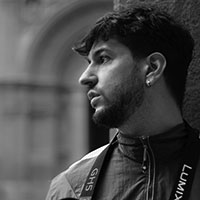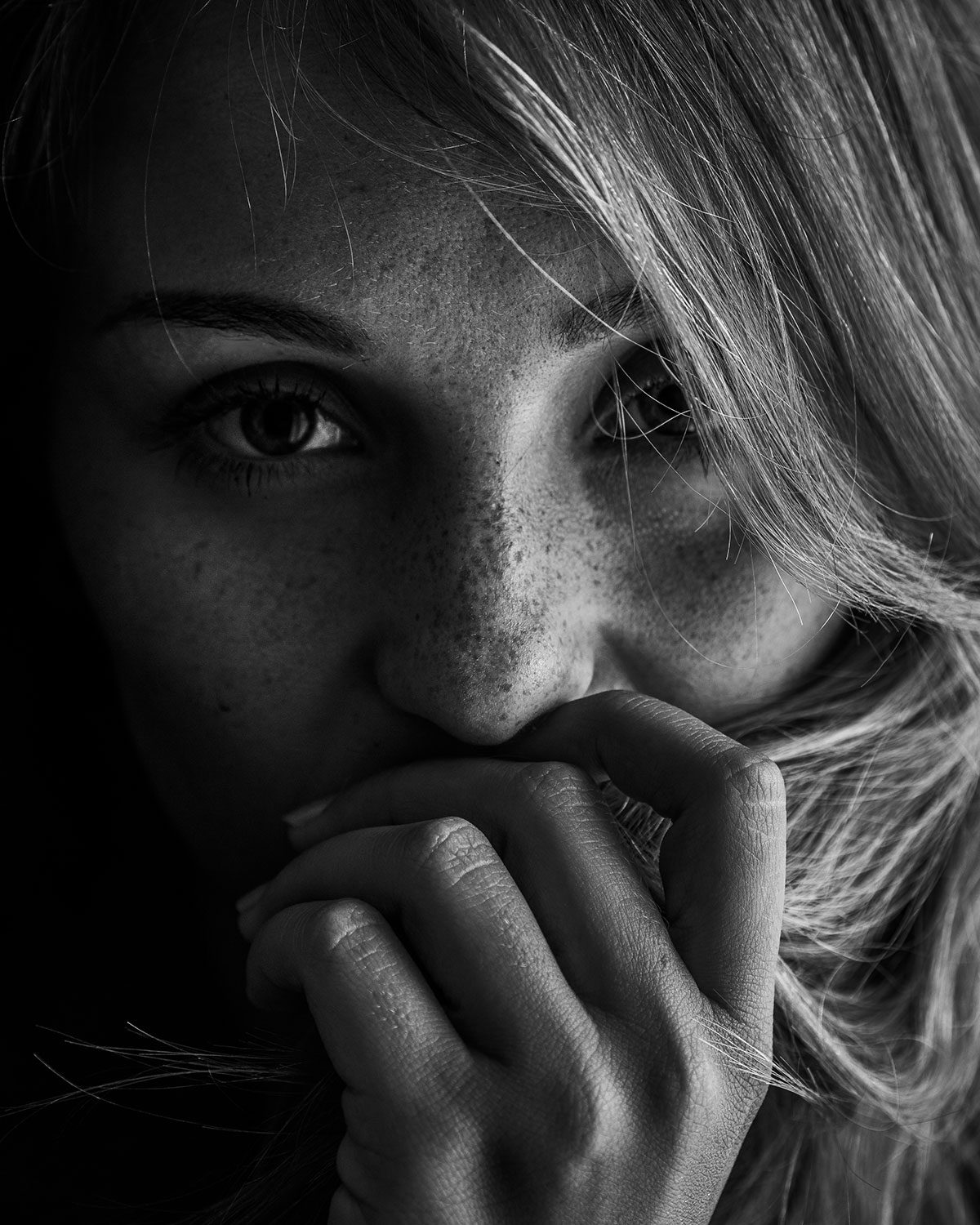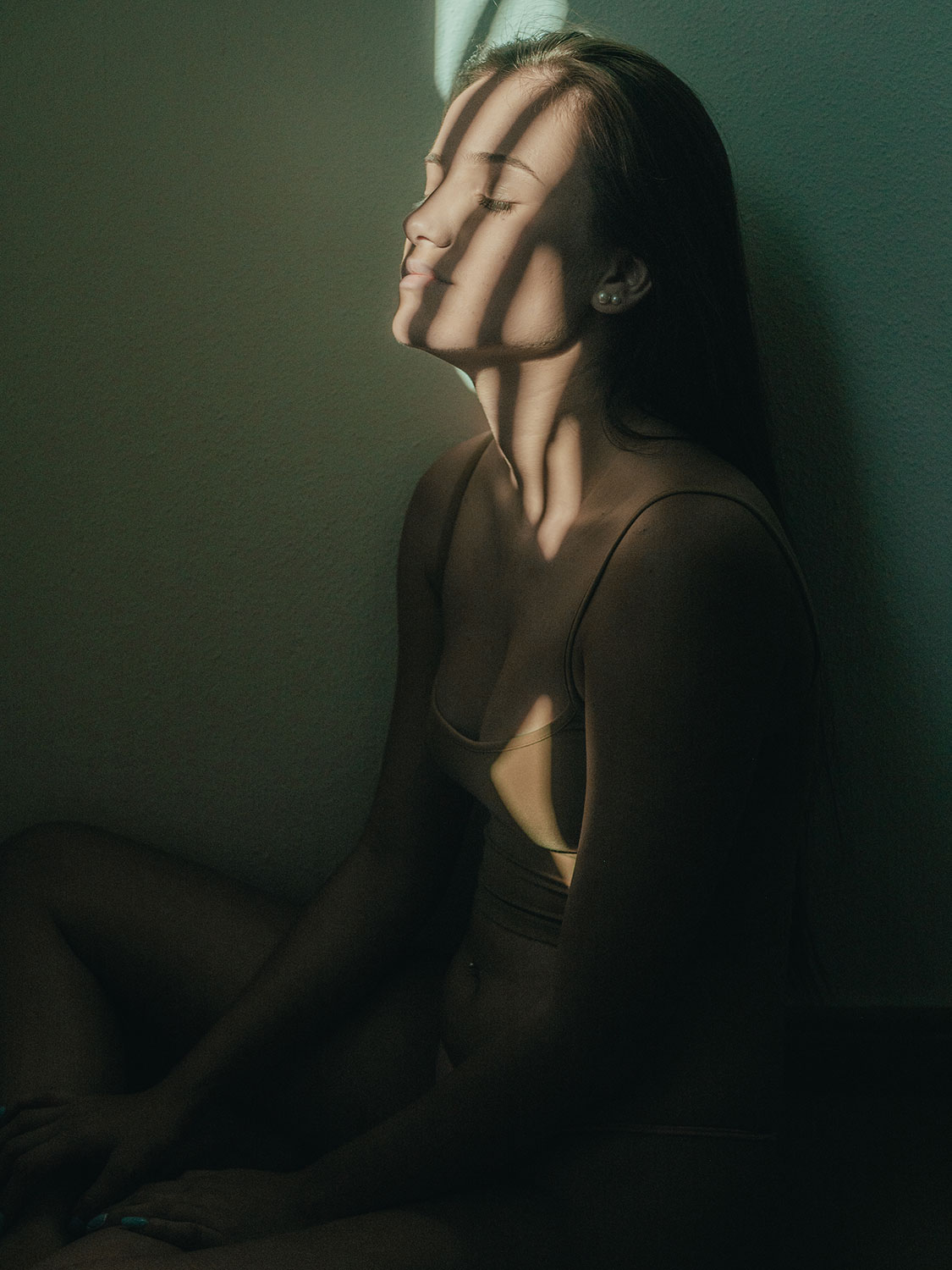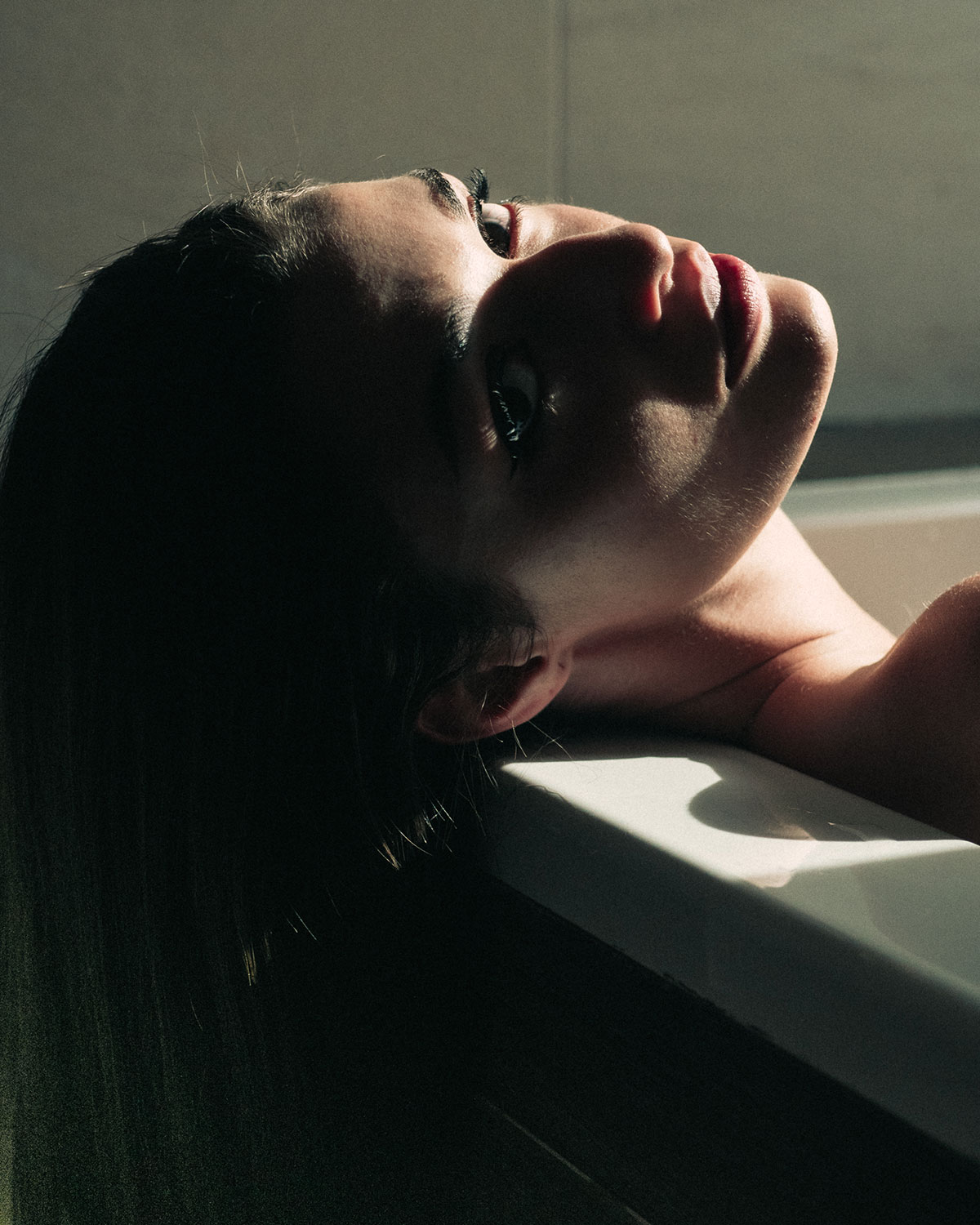Beautiful portraits using only natural light and the M.Zuiko 45mm F1.8
Jose Fernández-Ark (Murcia, Spain, 1990) graduated in Audiovisual Communication from the University of Murcia in 2016. In 2017, he completed a master’s degree in film direction at ESCAC (School of Film and Audiovisuals of Catalonia), where he was selected by ESCAC FILMS among the best students of his class and awarded with the production and subsequent distribution of “Los Bermejo”, his latest short film.
“Los Bermejo” is undoubtedly the director’s most ambitious and risky project, shot in June 2017, and in which he works with a comedy and a different tone from Jose’s previous works; a more reflective comedy, more corner, with an air of drama and above all a lot of black humour. The project already collects an infinity of selections and awards, of which the submarine Peral de Plata stands out at the FICC in Cartagena or the Augusto award for best short film at the Zaragoza International Film Festival, the qualifying festival for the Goya awards.
I am passionate about new technologies; videogames, cinema, photography… Reading is also part of my daily hobbies, especially classic Spanish novels or books about photography, cinema or film script. I am a fan of F.C. Barcelona since I can remember, and my father introduced me to football and the passion for sports. And now, I am lucky to live in Barcelona, just 500 meters from Camp Nou, the field of my dreams. The fate and chance of life.
RIGHT: Panasonic GH5 . Lumix G 25mmF1.7 . F/1.7 . 1/6400” . ISO 400
When it comes to music, I’m not very passionate about listening to it all the time. But I do like to remember and re-listen things from when I was younger, especially hip hop, electronic, videogame or movie soundtracks, from 2000 to 2008. I think it was the best time in terms of music or art in general. The music of these days… it’s better not to give my opinion.
My interest in photography comes from a somewhat peculiar way. Actually, I must confess that I have been a photographer or taking photos with a professional camera for only 4 months, since March 2021, when I did my first portrait session.
But I must clarify that it is not my first experience in art or audiovisual. I have been in the world of cinema since 2010, filming, writing, in projects of all kinds, short films, video clips, fashion films, spots, or working as an assistant in large Netflix or Amazon Prime productions, among others.
RIGHT: Panasonic GH5 . Lumix G 25mmF1.7 . F/2.8 . 1/200” . ISO 200
My interest in photography comes from a somewhat peculiar way. Actually, I must confess that I have been a photographer or taking photos with a professional camera for only 7 months, since March 2021, when I did my first portrait session.
But I must clarify that it is not my first experience in art or audiovisual. I have been in the world of cinema since 2010, filming, writing, in projects of all kinds, short films, video clips, fashion films, spots, or working as an assistant in large Netflix or Amazon Prime productions, among others.
RIGHT: Panasonic GH5 . Olympus M.Zuiko 45mmF1.8 . F/2.5 . 1/1600” . ISO 100
It was 5 months ago, I had to renew my film equipment, as my Black Magic Pocket died. I decided on the Panasonic GH5 because I read wonders on the internet, especially for people who made video, but also because I could take advantage of all my micro 4/3 lenses from my old camera.
But also taking advantage of the photography mode that the camera has and talking with friends, models or actors, I then did my first session out of curiosity, to try new things and because I am very restless in my day to day life. And it went well, I was pleasantly surprised in my first photographic work. I was very comfortable and felt excellent.
RIGHT: Panasonic GH5 . Olympus M.Zuiko 45mmF1.8 . F/2.5 . 1/4000” . ISO 100
I think that portraiture is the photographic genre where you can convey more feelings or emotions, and since I come from the world of cinema, where each sequence or shot has to communicate an emotion or a feeling, I felt quite reflected and wanted to do something like that, but this time in still images. It was a challenge.
Landscape, gastronomic, urban photography… I like them as a spectator, but not enough to upload content or be the author of that material.
RIGHT: Panasonic GH5 . Olympus M.Zuiko 45mmF1.8 . F/2.8 . 1/4000” . ISO 100
I love natural light, and I am in love with everything we can do with it. It is also totally free. Working with studio or artificial lights requires more experience and technical knowledge, but above all, equipment, which can be very expensive sometimes.
I am comfortable with natural light, know how to use it, and love the look it can give to a portrait. Playing with the shadows and contrasts that can result from this composition, it gives beautiful results. Still, I have spotlights, LED lights, and equipment that I sometimes use as well, although on rare occasions.
RIGHT: Panasonic GH5 . Olympus M.Zuiko 45mmF1.8 . F/2.8 . 1/2000” . ISO 125
It’s funny how cheap and easy it can be to work with natural light. Right now, in my sessions, I only use a camera, a reflector that I hardly use, and some cardboard with cut out shapes to make shadows by placing them in direct light, nothing more.
In your house, just with the windows and some natural light, even without being direct, you already have a home studio where you can take spectacular photos, although you have to be creative and think about each image before doing anything. With a light source from a window, we can make up to 5 different types of portrait, with a frontal, lateral, semi-contra, and contra light, etc. It’s that easy.
I have worked very little outdoors. Still, I recommend not taking photos in the central hours of the day, where the sun is just above, and doing it during sunrise or sunset, where the light is prettier, warmer and less harsh than at 2:00 pm. Although they are personal decisions, and each artist is different.
I currently work with the Panasonic GH5, and my preferred lenses are the Olympus M.Zuiko 45mm F1.8 and the Lumix 25mm F1.7. I have also used the Kamlan 50mm F1.1, but I was not convinced by its fully manual mode and sold it.
The micro 4/3 system has its advantages but also its disadvantages, although after so many years of using this system for video, it ends up catching on to it. I especially love how light all your gear can be in a backpack.
I was recently walking around town with a friend who is also a photographer who uses Nikon, and it was funny to compare the weight and size of both pieces of equipment. My back is grateful every time I go out to take pictures.
RIGHT: Panasonic GH5 . Olympus M.Zuiko 45mmF1.8 . F/2.8 . 1/640” . ISO 125
I also love the price of the lenses. You can find authentic bargains from Chinese brands at a ridiculous price. While in Canon or Sony, everything is much more expensive.
Perhaps the only thing I miss is a larger sensor with which to be able to have less depth of field and achieve an even bigger bokeh effect, but with very bright micro 4/3 lenses, the difference is not so noticeable.
RIGHT: Panasonic GH5 . Olympus M.Zuiko 45mmF1.8 . F/1.8 . 1/2000” . ISO 1250
My flagship lens and my favourite is the Olympus M.Zuiko 45mm F1.8. I bought it several years ago and used it a lot in my film productions with the BMPCC. Now that I have the GH5 and taking advantage of the lenses that I used before, without a doubt, this lens is essential in my backpack whenever I do portrait sessions.
The sharpness and quality it has are incredible, even at very large apertures, and I have never noticed aberrations or distortions of any kind. The bokeh is gorgeous, and the speed with which it focuses on auto makes your job a lot easier. The best thing is that on Amazon, it does not cost more than €300, which seems totally ridiculous to me.
Maybe in the future, I will invest in a more expensive lens and with much better results, but for now, I am in love with the M.Zuiko. The Lumix 25mm I only use it when space is limited, in small rooms where it is impossible to do a mid-shot with the M.Zuiko, because if not, I would always use the 45mm F1.8 from Olympus.
I usually edit with Adobe Lightroom. It is the software par excellence and where I work more comfortably, although I have also tried Luminar to make some somewhat unusual effect, such as adding an artificial sun or improving the sky using the artificial intelligence of that software.
RIGHT: Panasonic GH5 . Olympus M.Zuiko 45mmF1.8 . F/2.8 . 1/2500” . ISO 100
Spanish:
Jose Fernández-Ark (Murcia, España, 1990) se licenció en Comunicación Audiovisual por la Universidad de Murcia en 2016. En 2017, cursó el máster de dirección cinematográfica en ESCAC (Escuela de cine y audiovisuales de Cataluña), donde fue seleccionado por ESCAC FILMS entre los mejores alumnos de su promoción y premiado con la producción y posterior distribución de “Los Bermejo”, su último cortometraje.
“Los Bermejo” , es sin duda el proyecto más ambicioso y arriesgado del director, rodado en Junio de 2017, y en el que trabaja una comedia y un tono diferentes a los anteriores trabajos de Jose; una comedia más reflexiva, más esquinada, con aires de drama y sobre todo bastante humor negro. El proyecto ya colecciona infinidad de selecciones y premios, de los que destacan el submarino Peral de Plata en el FICC de Cartagena o el premio Augusto a mejor cortometraje en el Festival Internacional de cine de Zaragoza, festival calificador de los premios Goya.
Soy un apasionado de las nuevas tecnologías; los videojuegos, el cine, la fotografía…La lectura también forma parte de mis pasatiempos diarios, sobre todo novela clásica española o libros sobre divulgación acerca de la fotografía, cine o guion cinematográfico. Soy seguidos del F.C Barcelona desde que tengo uso de razón y mi padre me introdujo en esto del futbol y la pasión por el deporte, Y ahora, tengo la suerte de vivir en Barcelona a apenas 500 metros del Camp Nou, el campo de mis sueños. El destino y el azar de la vida.
En cuánto a música no soy un gran apasionado de escucharla a todas horas. Pero sí que me gusta recordar y volver a escuchar cosas de cuando era más joven, sobre todo hip hop, electrónica o bandas sonoras de videojuegos o películas, de la época del 2000 al 2008, pienso que ha sido la mejor época en cuanto a música o a arte en general. La música de ahora…mejor no opino.
Mi interés por la fotografía viene de una forma un tanto peculiar. En realidad, debo confesar que llevo apenas 7 meses siendo fotógrafo o haciendo fotos con una cámara profesional, desde Marzo del 2021, cuando hice mi primera sesión de retrato. Pero debo aclarar que no es mi primera experiencia en esto del arte o del audiovisual. Llevo desde el 2010 en el mundo del cine, filmando, escribiendo, en proyectos de todo tipo, cortometrajes, videoclips, fashion films, spots, o trabajando de auxiliar en grandes producciones de Netflix o Amazon Prime, entre otras.
Fue hasta hace 5 meses cuando tuve que renovar mi equipo cinematográfico, ya que mi Black Magic Pocket murió. Me decidí por la GH5 de Panasonic porque leí maravillas por internet, sobre todo para la gente que hacía vídeo, pero también porque podía aprovechar todas mis lentes micro 4/3 de mi antigua cámara. Pero aprovechando también el modo de fotografía que tiene la cámara y hablando con amigos modelos o actores hice entonces mi primera sesión por curiosidad, por probar cosas nuevas y porque soy muy inquieto en mi día a día. Y salió bien, me lleve una grata sorpresa en mi primer trabajo fotográfico. Estuve muy cómodo y me sentía excelente.
Pienso que el retrato es el género fotográfico donde más sentimientos o emociones puedes transmitir, y como vengo del mundo del cine, donde cada secuencia o plano tiene que comunicar una emoción o un sentimiento, me sentí bastante reflejado y quería hacer algo así, pero esta vez en imágenes fijas, era un reto. La fotografía de paisaje, gastronómica, urbana…me gustan como espectador, pero no como para subir contenido o ser el autor de ese material.
La Luz natural me encanta y estoy enamorado de todo lo que podemos hacer con ella, además es totalmente gratis. Para trabajar con luz de estudio o artificial hace falta más experiencia y conocimientos técnicos, pero sobre todo material, que a veces puede ser muy caro. Con la luz natural estoy cómodo, sé cómo utilizarla y me encanta el look que puede dar a un retrato, jugando con las sombras y los contrastes que pueden resultar de esta composición, es un resultado muy bonito. Aún así, tengo focos, luces leds y material que a veces utilizo también, aunque en raras ocasiones.
Es curioso lo barato y fácil que puede llegar a ser trabajar con luz natural. Ahora mismo en mis sesiones solamente utilizo una cámara, un reflector de luz que apenas utilizo y unos cartones con formas recortadas para hacer sombras colocándolos delante de una luz directa, nada más. Si tienes una casa con ventanas y algo de luz natural, incluso sin llegar a ser directa, ya tienes un estudio casero donde hacer unas fotos espectaculares, aunque hay que ser creativo y pensar cada imagen antes de hacer cualquier cosa. Con una fuente de luz que proviene de una ventana podemos hacer hasta 5 tipos de retrato distinto, con una luz frontal, lateral, de semi contra, de contra, etc. Es así de simple.
He trabajado muy poco en exterior, pero recomiendo no hacer fotos en las horas centrales del día, donde el sol está justo arriba, y sí hacerlo durante el amanecer o en el atardecer, donde la luz es más bonita, más cálida y menos dura que a las 14:00pm. Aunque son decisiones personales, y cada artista es un mundo.
En la actualidad trabajo con la GH5 de Panasonic y mis objetivos preferidos son el Olympus Zuiko 45mm 1.8 y el Lumix 25mm 1.7. También he utilizado el Kamlan 50mm 1.1, pero no terminó de convencerme por su modo totalmente manual y lo vendí.
El sistema micro 4/3 tiene sus ventajas pero también sus desventajas, aunque después de tantos años utilizando este sistema para vídeo se le termina cogiendo cariño. Me encanta sobre todo lo ligero que puede llegar a ser todo tu equipo dentro de una mochila. Hace poco que caminaba por la ciudad con un amigo también fotógrafo que tiene un equipo Nikon y fue gracioso comparar el peso y el tamaño de ambos equipos, mi espalda lo agradece cada vez que salgo a echar fotos.
EL precio de las lentes también me encanta. Se pueden encontrar auténticos chollos de marcas Chinas a precio ridículo. Mientras que en Canon o Sony todo es mucho mas caro.
Quizás lo único que echo de menos es un sensor más grande con el que poder tener menos profundidad de campo y conseguir un efecto bokeh aún más grande, pero con objetivos muy luminosos de micro 4/3 la diferencia no es tan notable.
Mi objetivo estrella y mi favorito es el Olympus Zuiko 45mm 1.8. Lo compré hace varios años y lo utilizaba muchísimo en mis producciones cinematográficas con la BMPCC. Ahora que tengo la GH5 y aprovechando las lentes que usaba antes, sin duda esta lente es una imprescindible dentro de mi mochila siempre que hago sesiones de retrato. Es increíble la nitidez y la calidad que tiene incluso en aperturas muy grandes, y yo jamás he notado aberraciones o distorsiones de ningún tipo. El bokeh es precioso y la rapidez con la que enfoca en automático te facilita mucho el trabajo. Lo mejor es que en Amazon no cuesta más de 300 €, me parece totalmente ridículo. Quizás en un futuro invierta en una lente más cara y con unos resultados mucho mejores, pero de momento, estoy enamorado del Zuiko. El Lumix 25mm lo utilizo solamente cuando el espacio es limitado, en habitaciones pequeñas donde es imposible hacer un plano medio con el Zuiko, porque si no, siempre utilizaría el 45mm 1.8 de Olympus.
Suelo editar con Adobe Lightroom, es el software por excelencia y dónde mas cómodo trabajo, aunque también he probado Luminar para hacer algún efecto un tanto inusual, como añadir un sol artificial o mejorar el cielo mediante la inteligencia artificial de ese software.

Jose Fernández-Ark (Murcia, Spain, 1990) graduated in Audiovisual Communication from the University of Murcia in 2016. In 2017, he completed a master’s degree in film direction at ESCAC (School of Film and Audiovisuals of Catalonia), where he was selected by ESCAC FILMS among the best students of his class and awarded with the production and subsequent distribution of “Los Bermejo”, his latest short film.
“Los Bermejo” is undoubtedly the director’s most ambitious and risky project, shot in June 2017, and in which he works with a comedy and a different tone from Jose’s previous works; a more reflective comedy, more corner, with an air of drama and above all a lot of black humor. The project already collects an infinity of selections and awards, of which the submarine Peral de Plata stands out at the FICC in Cartagena or the Augusto award for best short film at the Zaragoza International Film Festival, the qualifying festival for the Goya awards.
































Jarek
December 19, 2022 @ 07:10
I read your text with pleasure and was very surprised that you use quite cheap lenses. The results are amazing. Congratulations. It means that it’s not the equipment that makes the pictures, but the people.